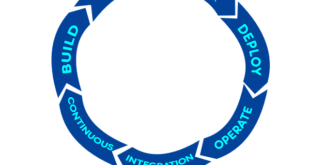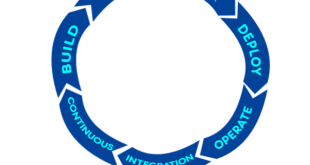DevOps is an IT practice used in software development lifecycle that forms cross-functional teams comprising professionals from development, operations, and testing. These collaborations create a dynamic operating environment, automate manual process, and incorporate agile practices to produce high-quality software. DevOps practices significantly reduce the operational costs and makes IT services delivery more agile through enhanced collaboration, communication, and integration. One of the key tools of a DevOps services is CI/CD, which speeds up the software development lifecycle through automation and standardization.
Here is how companies can take DevOps to the next level.
1. Assume a Horizontal Approach
A horizontal approach means switching to a flat hierarchy that gives all team members involved in SDLC end-to-end ownership and allows them to have a complete view of the product. This method helps professionals better understand their tasks and perform effectively under tough situations. Horizontal approach aligns with the DevOps principles of streamlining the development process and improving the product quality through enhanced collaboration.
Developers in horizontal organizations can timely realize the bigger picture and take ownership of their responsibilities. This encourages teamwork and results in better overall performance.
2. Team Management
The purpose of the CI/CD pipeline is not to replace the DevOps teams; instead, its purpose is to assist the team members and empower them to improve their performance. Therefore, team management should be given considerable importance while designing pipeline. Instead of slowing down professionals, the configurations and tools should support team workflows and practices.
Similarly, developers should have greater visibility into SDLC processes to ensure timely identification of bugs. The pipeline design should ease collaboration and make it easy for members from development, operations, and testing departments to identify and respond to issues.
3. Maintain Continuity
DevOps is a continuous process that involves consistent refinement of codes and regular monitoring of process for performance or security concerns. The biggest advantage of DevOps strategy is that it automates the manual process and helps teams achieve continuity in SDLC.
Hence, maintain this continuity is key to gaining the maximum benefit from DevOps approach. A better way is to create multiple alerts and scripts according to the pipeline for effective management of routine processes and analyses.
4. Encourage Competition through Published Metrics
Transparency plays a key role in enhancing organizational performance and promoting teamwork. To better evaluate the teams’ performance, there must be a certain criteria with predefined goals. The results of that criteria will help teams compare performance and overcome their weaknesses.
In this context, automated metrics can be used to foster competition between development teams. Some of the key units of metrics that can be used to compare performance of DevOps teams are their operational efficiency, service quality, the rate of software development, and release agility.
5. Adopt Microservices
Agile pipelines reduce software delivery time and improve the product quality. Companies can make their CI/CD pipeline agile by adopting microservices that categorize different components of applications and tools. Additionally, microservices make pipelines easier to maintain and offer enhanced availability and flexibility.
Microservices can be adopted even if an organization is already working with a legacy pipeline. This can be done by replacing tools piecemeal with updated and advanced tools.
Conclusion
While agile technologies like DevOps are critical to improve software quality, they also offer a whole new world of challenges. Companies often find it difficult to manage a DevOps pipeline that meets their business needs. Visit here https://khired.com/services/devops/ for more information.
To overcome this challenge, companies need to take step to constantly assess their situation and monitor every component of their operation. Besides, they can take DevOps to the next level by assuming a horizontal approach, maintaining continuity, publishing metrics, and adopting microservices.
Also Visit:
 Fun Time Tech Let’s have a fun with technology
Fun Time Tech Let’s have a fun with technology



